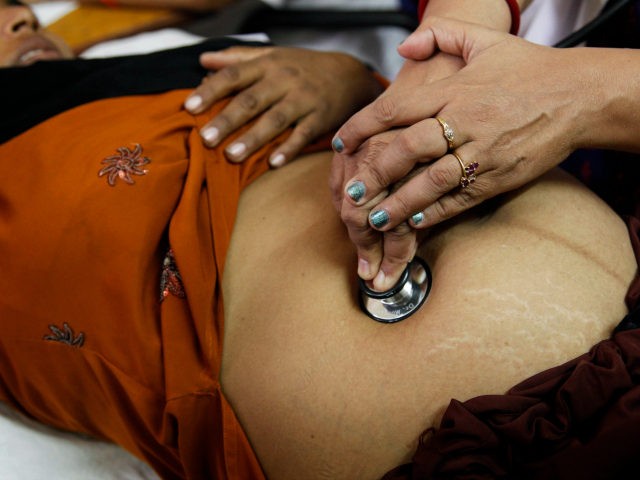A new study finds that about 15.6 million abortions were performed in India in 2015, making the abortion rate in that country 47 abortions per 1,000 women between the ages of 15 and 49.
The study is published at Lancet Global Health and was conducted by the pro-abortion rights Guttmacher Institute – which was founded by former Planned Parenthood President Alan Guttmacher – the Population Council of New Delhi, and the International Institute for Population Sciences.
According to the study, 81 percent of the abortions performed in India are via medication, and 14 percent are surgical abortions.
Former abortionist Dr. Anthony Levatino explains that during a medication abortion – usually occurring within the first trimester – the mother takes Mifepristone (also known as RU-486), a drug that blocks the action of the hormone progesterone, which is naturally produced during pregnancy, to enable her to nourish the baby. Without progesterone, the lining of the mother’s uterus breaks down, and the baby dies inside her womb after being denied blood and nourishment.
Within the next day or two, the mother takes another drug called Misoprostol (also called Cytotec) that causes contractions and bleeding, forcing the baby from her uterus.
The study also finds that of the 48.1 million pregnancies in India in 2015, about half were unintended, leading to an unintended pregnancy rate of about 70 per 1,000 women between the ages of 15 and 49. The researchers note India’s unintended pregnancy rate is comparable to those of Bangladesh (67) and Nepal (68) but lower than that of Pakistan (93).
Using the narrative that abortion is “women’s health care,” Dr. Susheela Singh, vice president for International Research at the Guttmacher Institute and co-author of the study, said, “Women in India face considerable challenges trying to obtain abortion care, including the limited availability of abortion services in public health facilities.”
“Our findings suggest that a shortage of trained staff and inadequate supplies and equipment are the primary reasons many public facilities don’t provide abortion care,” she added.
As the authors note, India passed the Medical Termination of Pregnancy Act in 1971, which has made abortion legally available for almost any reason, including “to save a woman’s life, to protect her physical and mental health, in cases of economic and social necessity, and if contraception has failed between married couples.”
The study aims to “improve the availability and quality of abortion services in health facilities, including training and certifying more doctors to provide abortion care.”
Additionally, the researchers recommend that “nurses, AYUSH doctors (practitioners of indigenous medicine) and auxiliary nurse midwives … provide” medication abortions.
“This would substantially expand the number of providers—and facilities—qualified to offer safe abortion services,” the authors claimed, stressing as well “the importance of ensuring that public health facilities have the equipment and drug supplies necessary to provide surgical abortion care and [medication abortion].”
The researchers note that, in a country in which males are preferred, the study does not address the reasons for abortion in India, including those performed for sex selection.
“However, it is notable that the national sex ratio at birth (number of girls per 1000 boys) has changed little in the past decade (901 girls per 1000 boys in 2005–07 vs 906 girls per 1000 boys 2012–14),” they wrote. “Worldwide, the sex ratio is about 950 girls per 1000 boys at birth; the most recent sex ratio at birth in India (906 girls to 1000 boys) indicates that sex-biased abortion is occurring.”
The study also recommends improving the quality and range of contraceptive services.
Global feminist groups, including Planned Parenthood, and the abortion industry continue with the narrative that birth control is key to women’s economic and social advancement.
Ironically, however, a study released in March by the same Guttmacher Institute found that in the United States, since the Obamacare contraception mandate was inserted into the healthcare law – essentially giving over 55 million women in this country free birth control – there has been “no change in levels of contraceptive use or in consistency of use among U.S. women at risk of unintended pregnancy.”
“The lack of observable change in contraceptive use patterns may be surprising, given the many medical and advocacy groups hypothesizing that increased insurance coverage without cost sharing under the ACA would result in increased and improved contraceptive use,” observed the study’s authors.

COMMENTS
Please let us know if you're having issues with commenting.